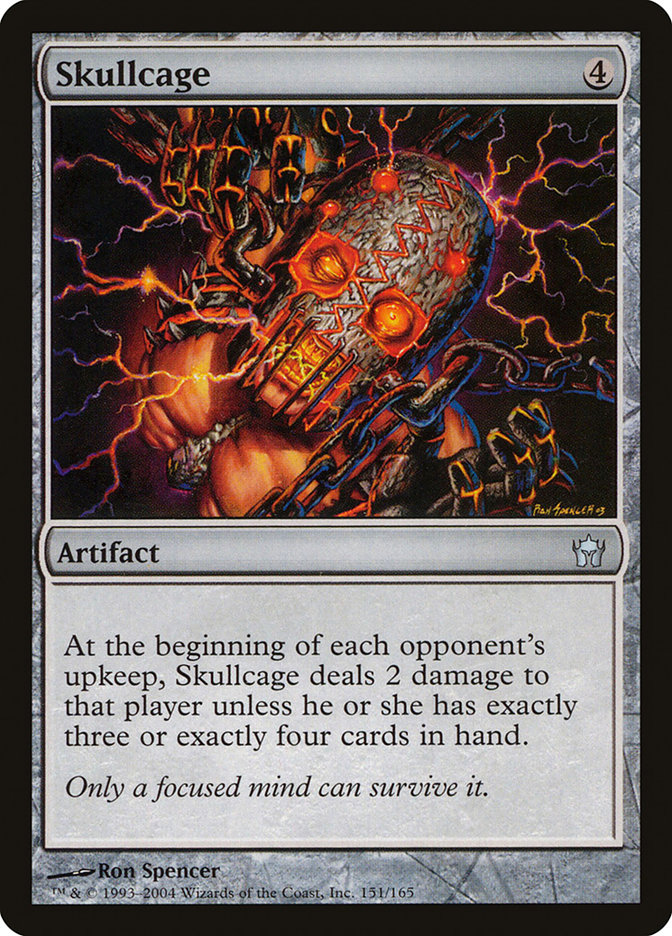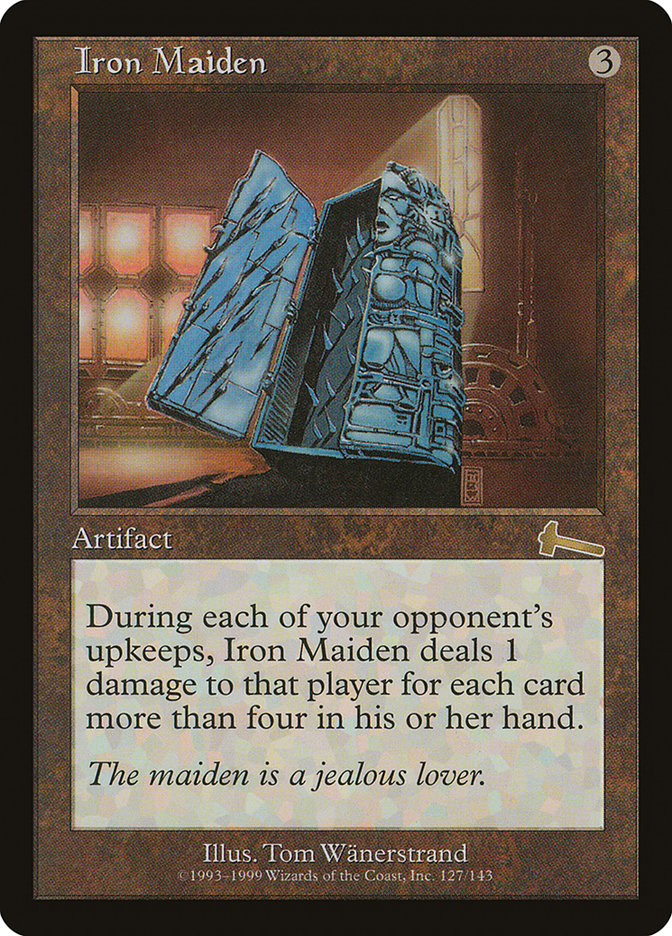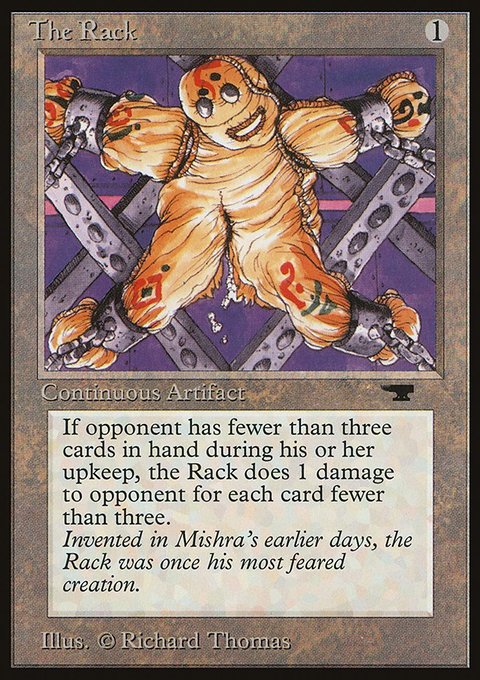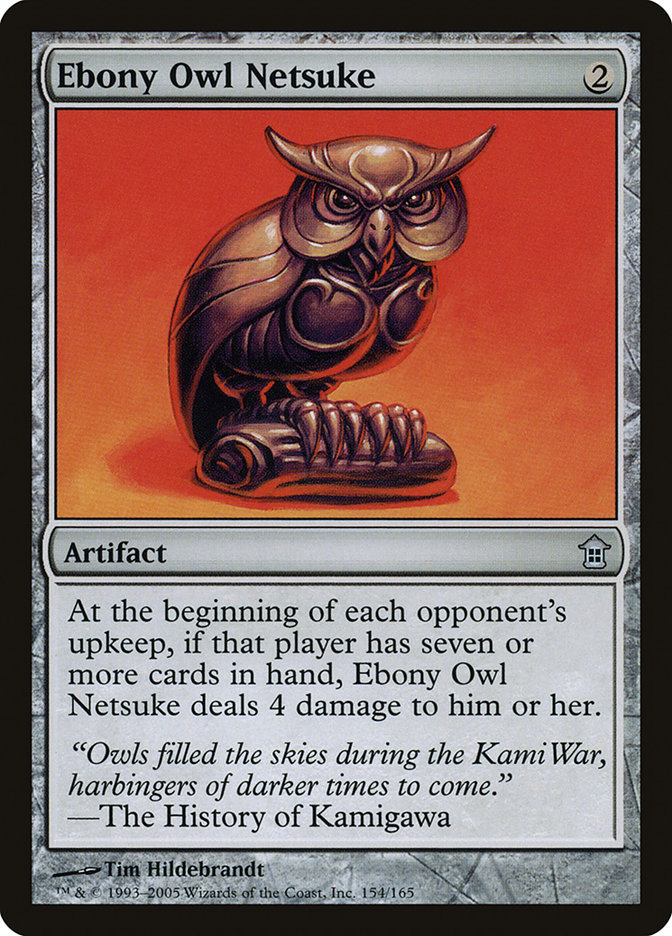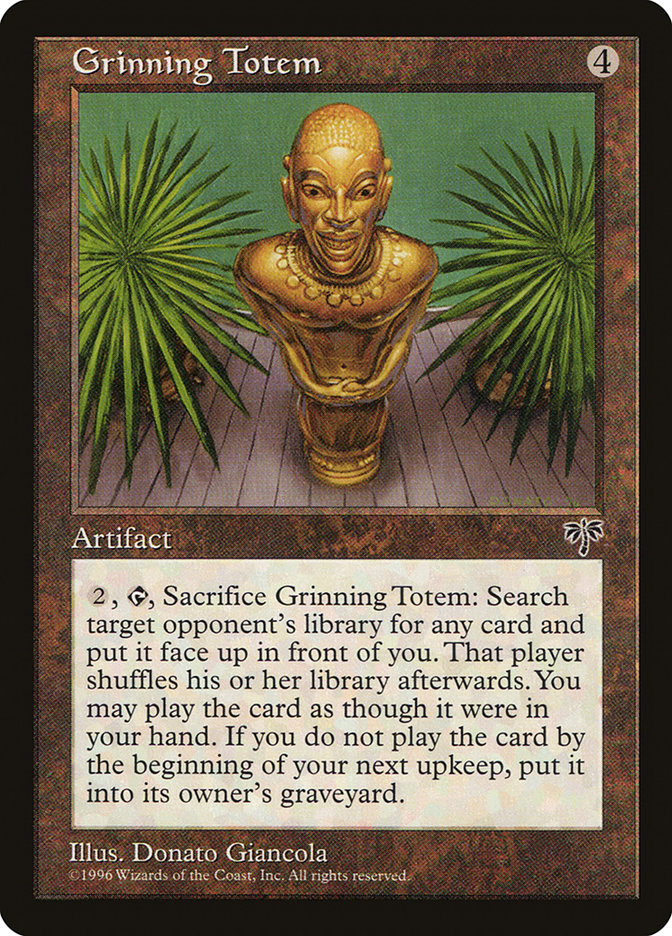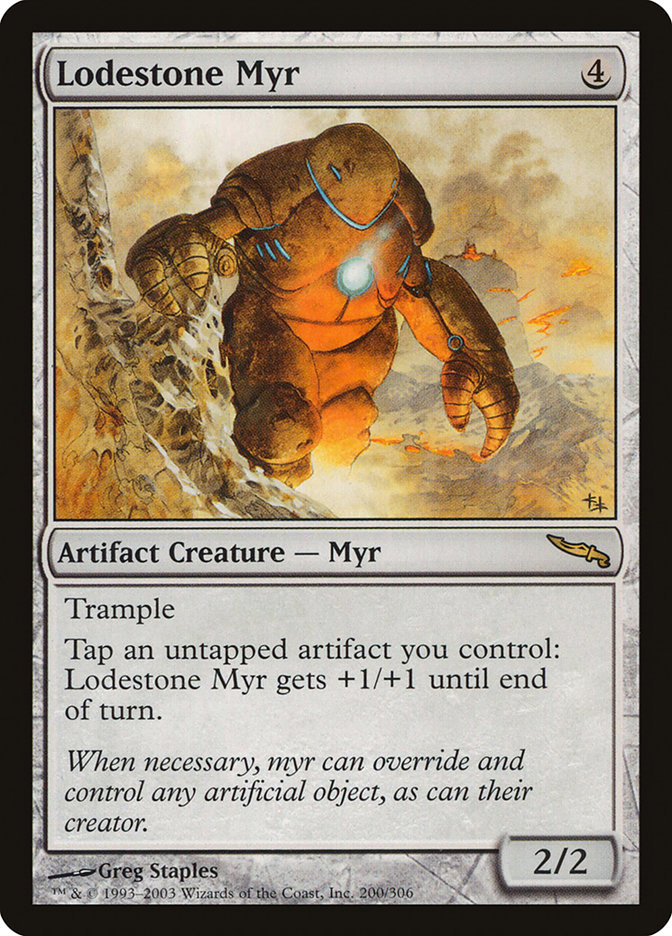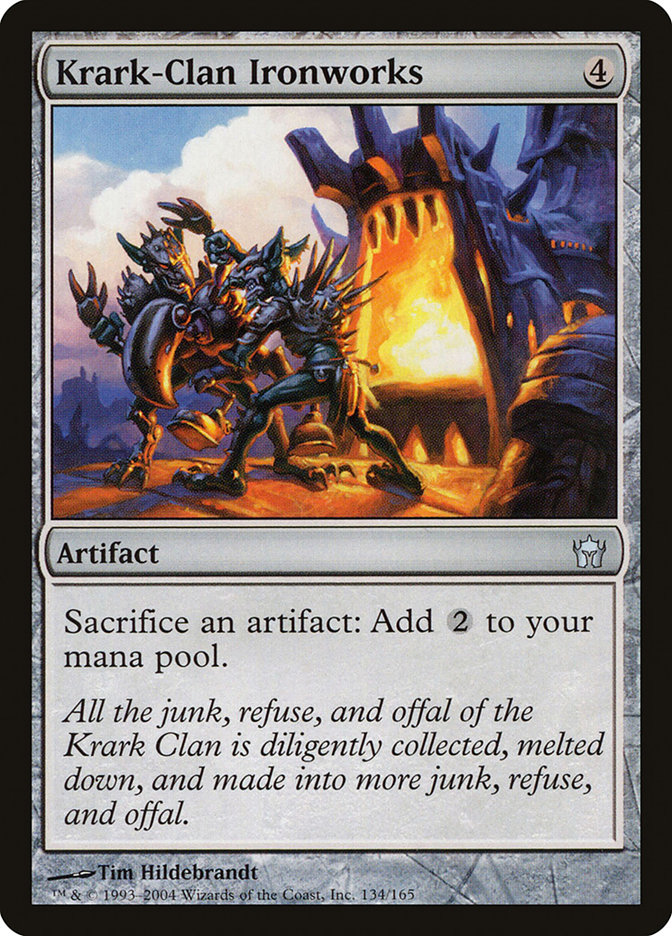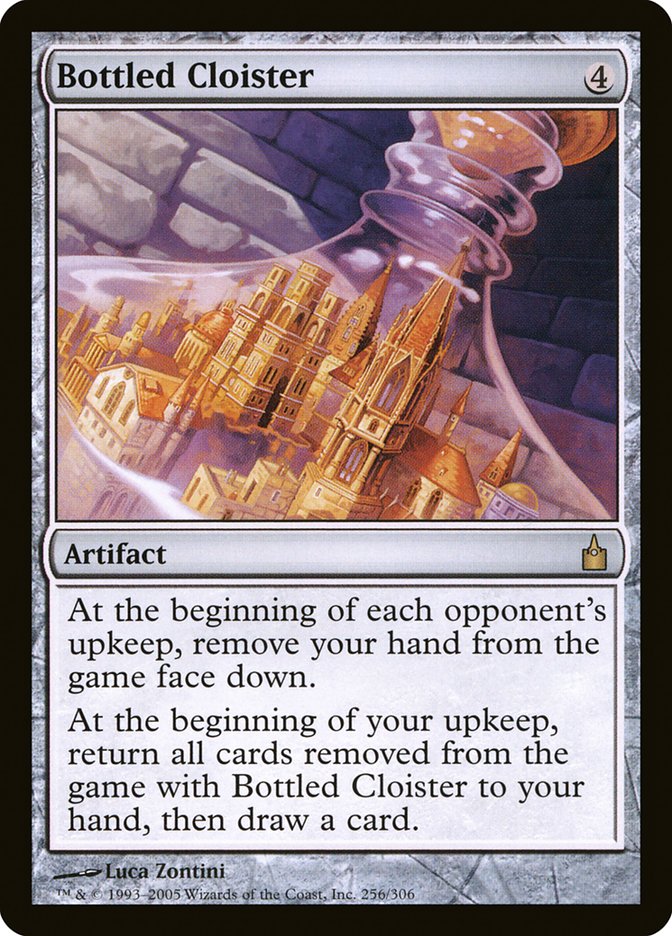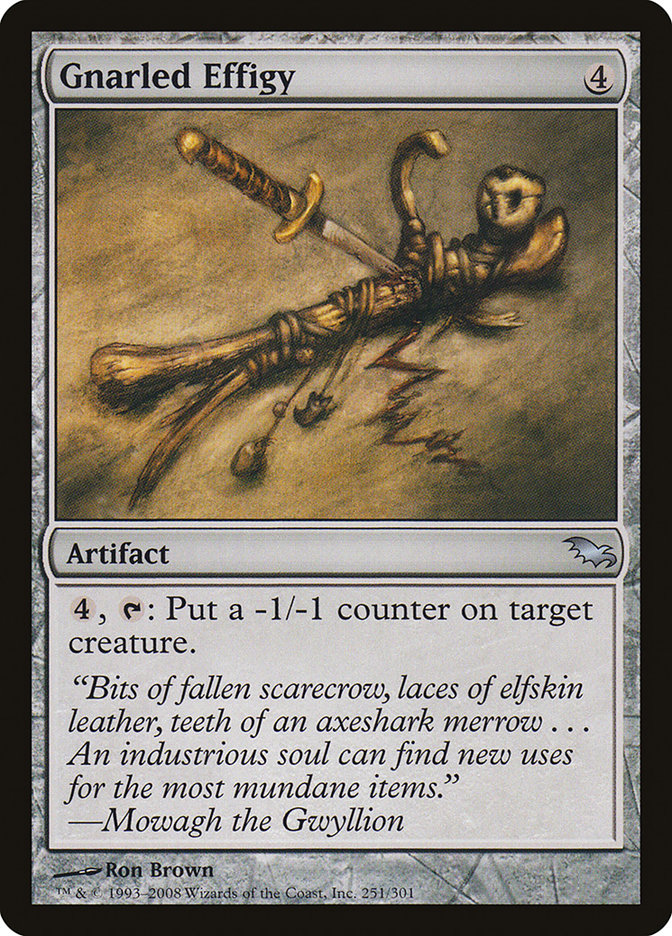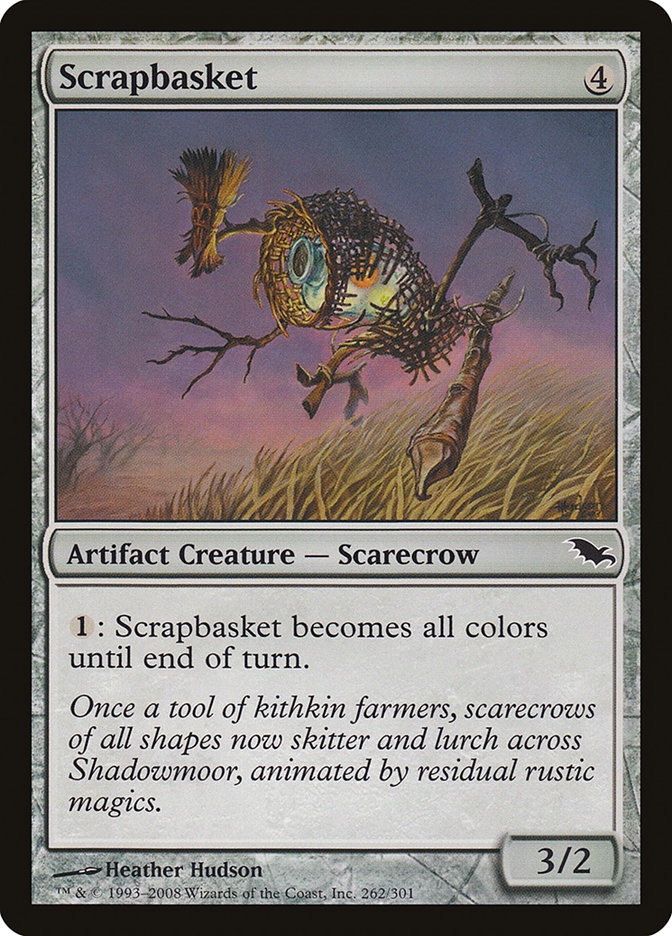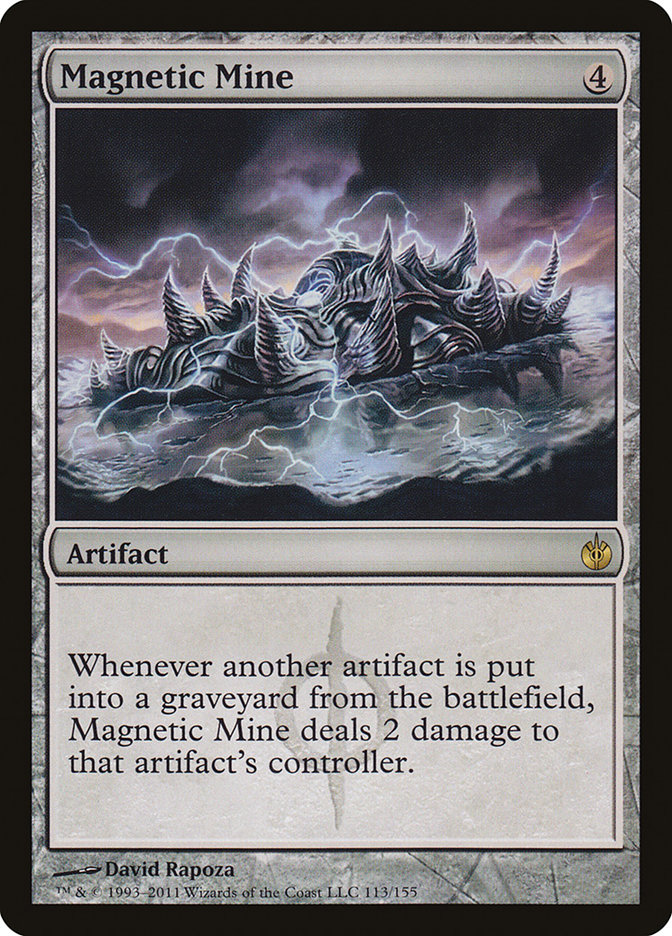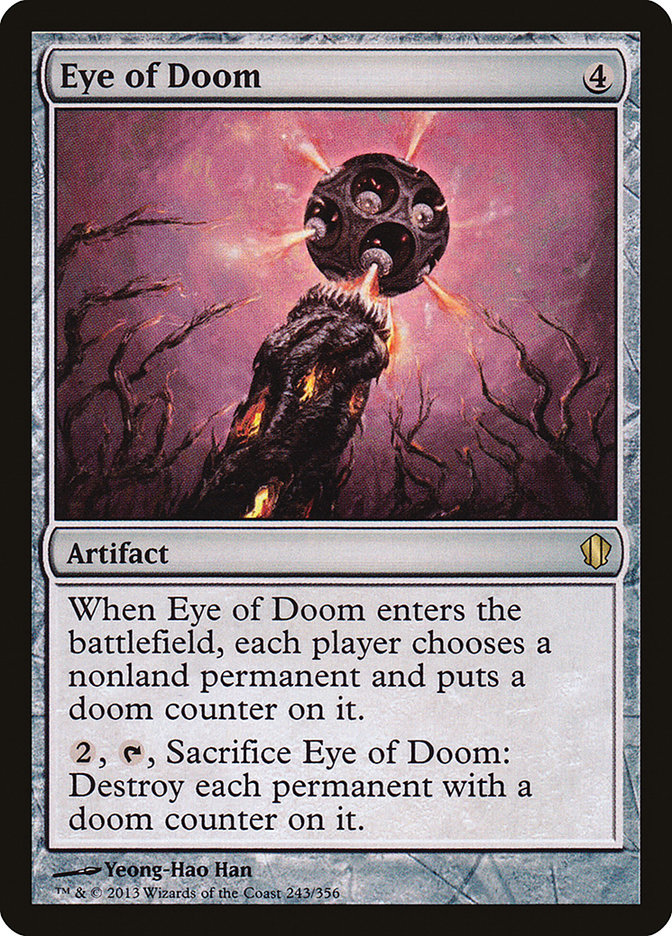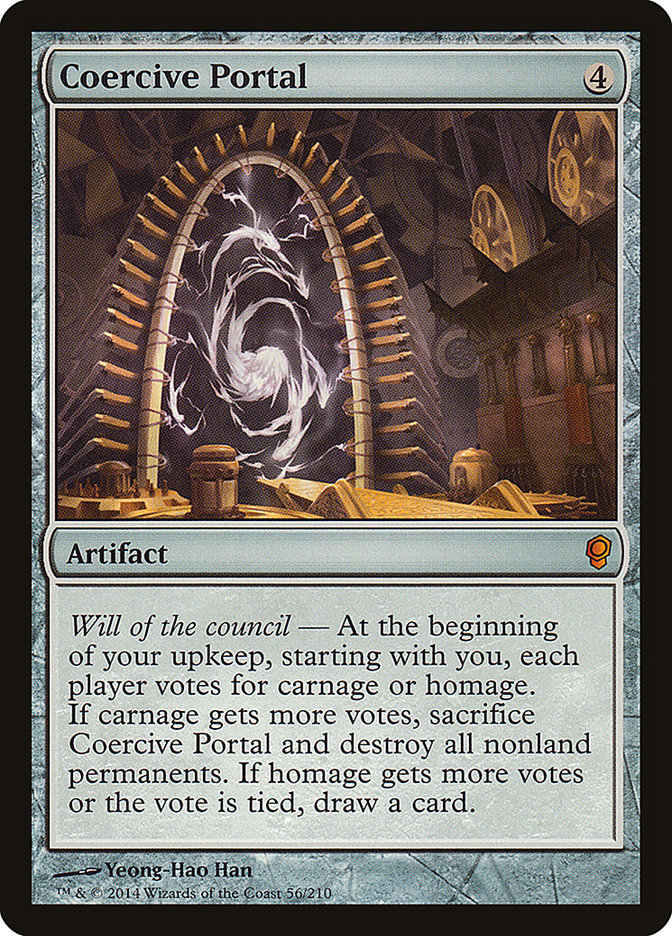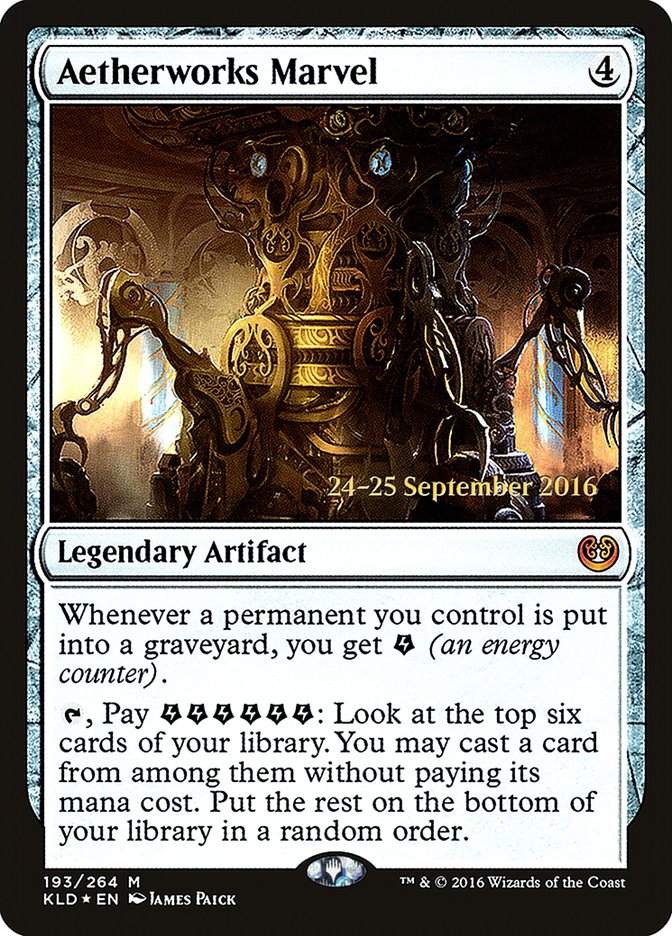Skullcage MTG Card
| Card sets | Released in 2 setsSee all |
| Mana cost | |
| Converted mana cost | 4 |
| Rarity | Uncommon |
| Type | Artifact |
Text of card
At the beginning of each opponent's upkeep, Skullcage deals 2 damage to that player unless he or she has exactly three or exactly four cards in hand.
Only a focused mind can survive it.
Cards like Skullcage
In Magic: The Gathering, Skullcage stands out in the array of artifacts designed to whittle down an opponent’s life total. This card can be paralleled to Iron Maiden, which shares the concept of inflicting damage based on the number of cards in the opponent’s hand. However, Skullcage deals a fixed damage whereas Iron Maiden’s damage scales with the number of cards.
Looking at The Rack, another comparable card, we see a shift in perspective. The Rack targets players with fewer cards in hand, effectively complementing Skullcage’s strategy against players with fuller hands. Ebony Owl Netsuke takes a similar tactic to Skullcage, dealing damage if an opponent has a specific number of cards in hand. These cards are often used in unison within decks that aim to control the opponent’s hand size, punishing them for both abundant and scarce resources.
Overall, Skullcage adds to the diversity of hand-size-based punishment artifacts in the game, offering a unique damage condition that can be strategically utilized in specific MTG deck types. Its role in controlling opponents by dictating the pace and size of their hand is invaluable in games where hand manipulation is key.
Cards similar to Skullcage by color, type and mana cost
Card Pros
Card Advantage: Skullcage is designed to put your opponent in a challenging position where they must carefully balance their hand size. Each upkeep, if they hold exactly three or four cards, Skullcage deals two damage to them. This sustained, automatic pressure can often lead to your opponent discarding valuable resources to avoid the damage, indirectly providing you with card advantage as you deplete their options.
Resource Acceleration: While Skullcage doesn’t directly accelerate your resources, the advantage it creates can force your opponent to alter their game plan. This can translate to more favorable board states for you as they might need to play inefficiently to avoid triggering Skullcage’s effect, ultimately allowing you to deploy your resources more effectively.
Instant Speed: Skullcage operates at a passive, continuous effect rather than at instant speed. However, the constant threat of its triggered ability can impact your opponent’s decisions during their turn just as well. They might have to cast spells prematurely or alter their plays to change their hand size, which can be as impactful as any interaction you might have at instant speed.
Card Cons
Discard requirement: Skullcage requires opponents to have exactly three or four cards in hand to deal damage. This specific condition can be hard to achieve consistently, especially in the late game when players may have fewer or more cards.
Specific mana cost: Skullcage’s mana cost includes colorless mana, which may not be a drawback for most decks. However, its four-mana investment can be challenging in early game scenarios, especially when a quicker board presence is needed.
Comparatively high mana cost: With a cost of four mana, Skullcage competes with other impactful four-drops in the game. Players might find it less appealing when considering other cards at the same mana cost that offer immediate or more flexible effects.
Reasons to Include Skullcage in Your Collection
Versatility: Skullcage is adaptable to a variety of control decks seeking to punish opponents for their hand sizes. Whether running a deck that forces opponents to draw cards or one that keeps their hand size low, Skullcage can be a tool to consistently deal damage.
Combo Potential: This card pairs well with effects that manipulate hand sizes, such as forcing draws or discard. When combined with other cards that track your opponent’s hand size or graveyards, Skullcage can become a focal point in a strategic symphony that overwhelms opponents.
Meta-Relevance: In a game state where players often try to maximize their hand size for a range of strategies, Skullcage can act as a deterrent, making opponents think twice before hoarding cards. This relevance makes it a sneaky sideboard option or even a main deck consideration depending on the flux of the current meta.
How to beat Skullcage
Skullcage stands as a unique artifact in Magic: The Gathering, offering a fresh approach to punishing opponents’ card strategies. The card ideally chips away at opponents’ life totals when they hoard cards in hand, or when they’re running on empty. The cage’s effectiveness hinges on the number of cards within an adversary’s grasp, dealing damage if they hold exactly three or exactly one card at the upkeep phase.
To navigate around Skullcage’s constraints, maintaining balance is key. It requires a strategic finesse, ensuring that your hand neither overflows nor dwindles to the triggering counts. Spell efficiency becomes paramount, with an emphasis on casting spells on curve. Adeptly planned moves will prevent the precise card count that triggers Skullcage’s damage. Additionally, enchantment removal spells like Disenchant become valuable tools, capable of swiftly eliminating the Cage from the battlefield and disrupting your opponent’s control setup.
In essence, overcoming the challenge Skullcage presents means adeptly managing your hand size and including deck answers to artifacts. Successfully mitigating the damage Skullcage can inflict secures advantage in the delicate dance of spell casting and resource management intrinsic to the ebb and flow of Magic: The Gathering’s strategic gameplay.
Where to buy
If you're looking to purchase Skullcage MTG card by a specific set like Fifth Dawn and Archenemy, there are several reliable options to consider. One of the primary sources is your local game store, where you can often find booster packs, individual cards, and preconstructed decks from current and some past sets. They often offer the added benefit of a community where you can trade with other players.
For a broader inventory, particularly of older sets, online marketplaces like TCGPlayer, Card Kingdom and Card Market offer extensive selections and allow you to search for cards from specific sets. Larger e-commerce platforms like eBay and Amazon also have listings from various sellers, which can be a good place to look for sealed product and rare finds.
Additionally, Magic’s official site often has a store locator and retailer lists for finding Wizards of the Coast licensed products. Remember to check for authenticity and the condition of the cards when purchasing, especially from individual sellers on larger marketplaces.
Below is a list of some store websites where you can buy the Skullcage and other MTG cards:
 BUY NOW
BUY NOW BurnMana is an official partner of TCGPlayer
- eBay
- Card Kingdom
- Card Market
- Star City Games
- CoolStuffInc
- MTG Mint Card
- Hareruya
- Troll and Toad
- ABU Games
- Card Hoarder Magic Online
- MTGO Traders Magic Online
See MTG Products
Printings
The Skullcage Magic the Gathering card was released in 2 different sets between 2004-06-04 and 2010-06-18. Illustrated by Ron Spencer.
| # | Released | Name | Code | Symbol | Number | Frame | Layout | Border | Artist |
|---|---|---|---|---|---|---|---|---|---|
| 1 | 2004-06-04 | Fifth Dawn | 5DN | 151 | 2003 | Normal | Black | Ron Spencer | |
| 2 | 2010-06-18 | Archenemy | ARC | 115 | 2003 | Normal | Black | Ron Spencer |
Legalities
Magic the Gathering formats where Skullcage has restrictions
| Format | Legality |
|---|---|
| Commander | Legal |
| Legacy | Legal |
| Modern | Legal |
| Oathbreaker | Legal |
| Vintage | Legal |
| Duel | Legal |
| Predh | Legal |
| Penny | Legal |
Rules and information
The reference guide for Magic: The Gathering Skullcage card rulings provides official rulings, any errata issued, as well as a record of all the functional modifications that have occurred.
| Date | Text |
|---|---|
| 2004-12-01 | Skullcage doesn’t check hand size when it triggers, only when it resolves. |
| 2004-12-01 | Skullcage’s ability deals damage if the player has zero, one, two, five, or more than five cards in hand when its ability resolves. |
